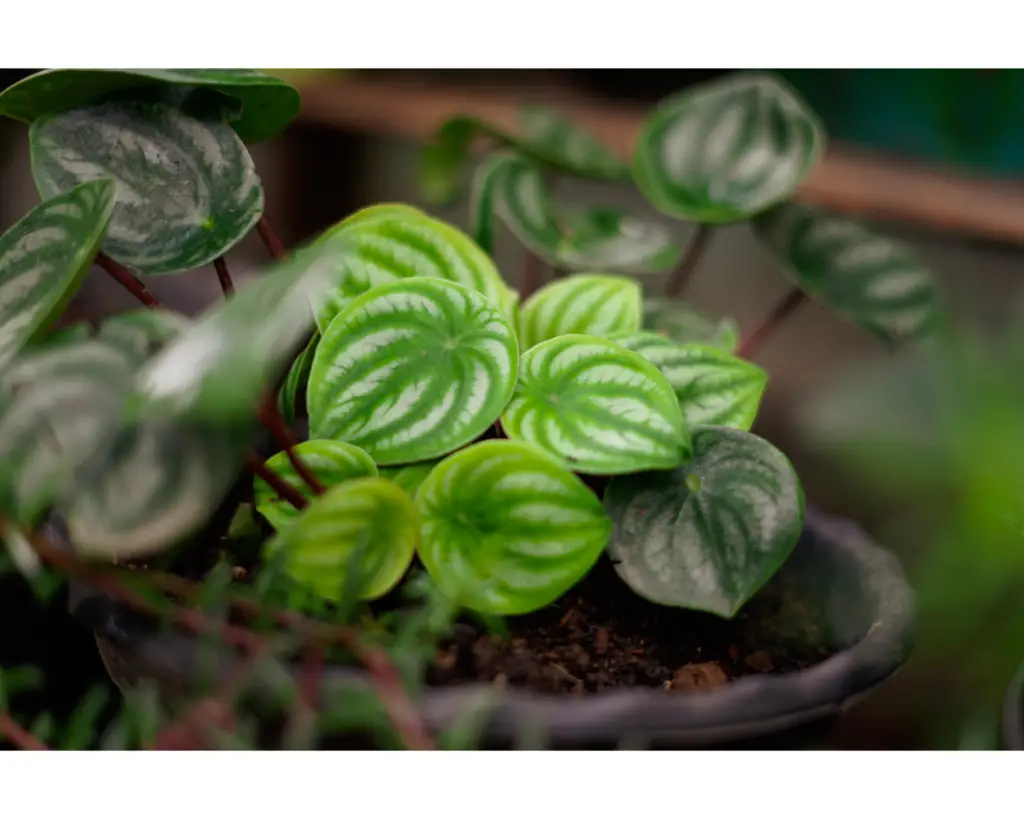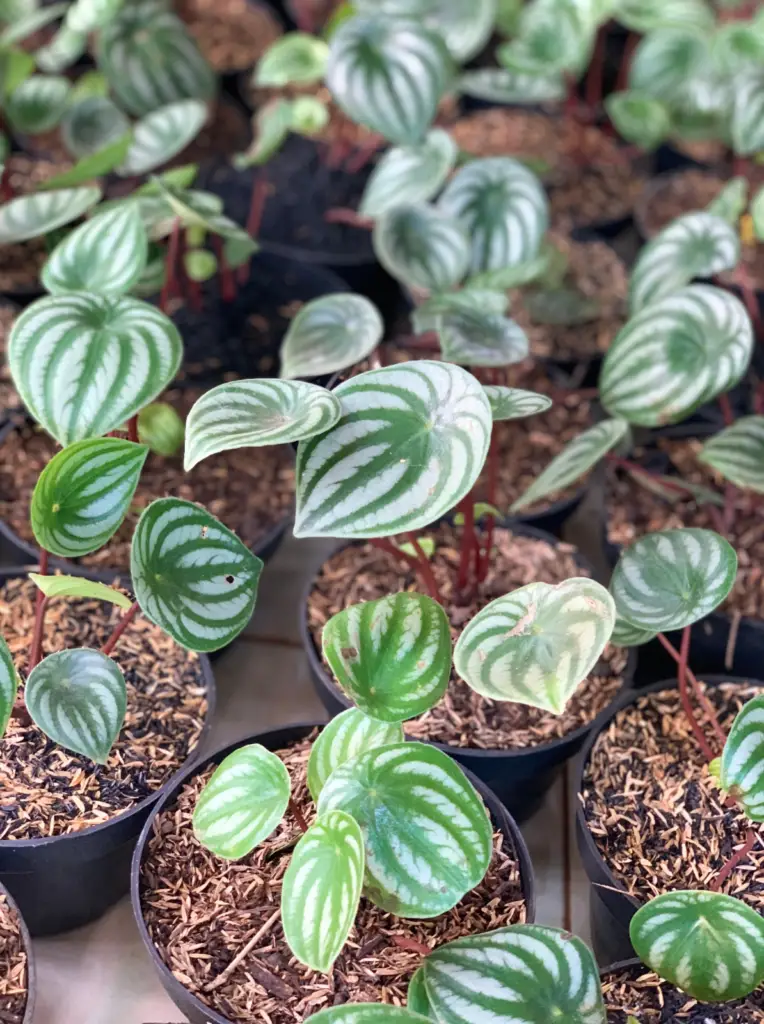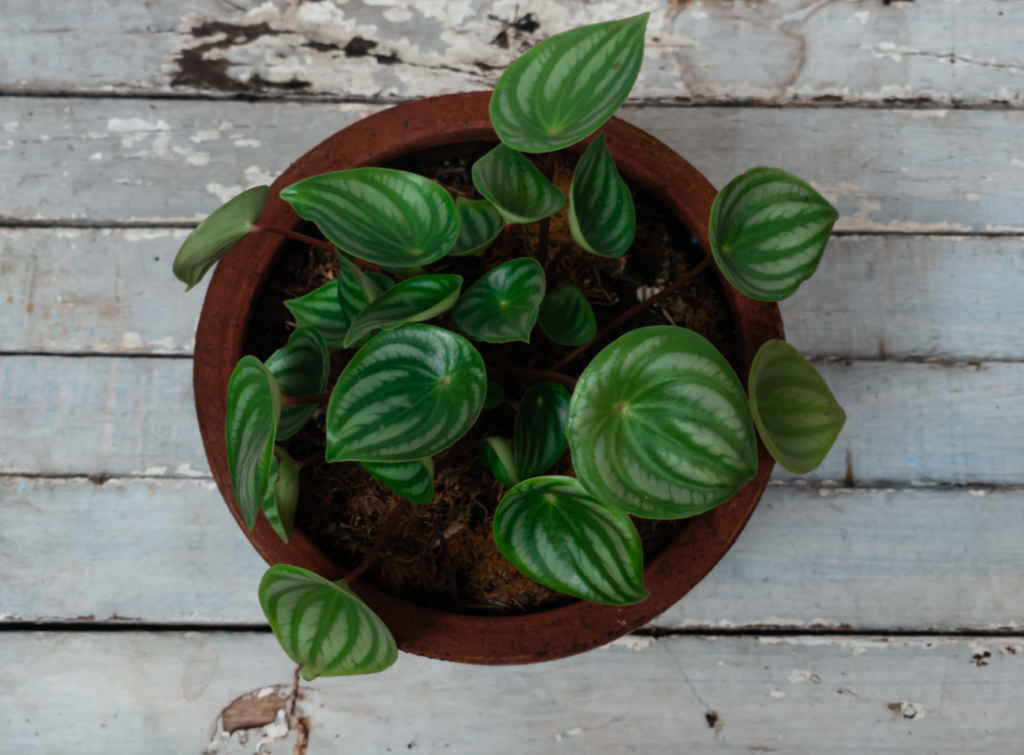Watermelon Peperomia (Peperomia argyreia), is an indoor plant that is beloved for its unique appearance and easy-to-care-for nature. This tropical plant is native to South America and belongs to the pepper family, Piperaceae. Its distinctive leaves resemble a watermelon rind, with shades of green and white that create a striped pattern. We will discuss the benefits of having Watermelon Peperomia as an indoor plant.
Table of Contents
Benefits of Watermelon Peperomia as an Indoor Plant
The Watermelon Peperomia is non-toxic, meaning it is safe for children and pet owners who want to add greenery to their homes. Additionally, the Watermelon peperomia is a great air purifier, it can remove harmful toxins from the air. It is an excellent choice for those who are new to gardening or have limited space. This plant is slow growing, making it an ideal choice for small apartments. This is a low-maintenance plant which is suitable for those who are busy to devote to plant care. Watermelon Peperomia is also a great plant for those who enjoy decorating their homes with unique and interesting plants. Its distinctive appearance adds a touch of flair to any room.

Caring for Watermelon Peperomia
Watermelon Peperomia is a relatively easy plant to care for, but there are some things to keep in mind to ensure that it thrives in your home:
- Light: Watermelon Peperomia prefers bright, indirect light, but can also tolerate lower light conditions. Direct sunlight should be avoided, as it can scorch the leaves.
- Watering: This plant prefers to be kept on the dry side, so it is important not to overwater it. Water when the top inch of soil is dry, and make sure the pot has drainage holes to prevent water from sitting in the soil and causing root rot.
- Humidity: Watermelon Peperomia thrives in humid environments, so it is a good idea to mist the leaves occasionally or place the plant on a tray of pebbles and water to create a humid microclimate.
- Soil: This plant prefers well-draining soil that is rich in organic matter. A mixture of potting soil, perlite, and peat moss is a good option.
- Temperature: Watermelon Peperomia prefers temperatures between 65 and 75 degrees Fahrenheit, (18-23 degrees Celsius) making it a great choice for indoor environments.
- Propagation: Watermelon Peperomia can be propagated easily by taking stem cuttings and rooting them in water or soil.
- Pests and Diseases: This plant is relatively pest and disease-free, but can be susceptible to mealybugs and spider mites. Regularly inspecting the plant for signs of infestation and treating with a natural pesticide or insecticidal soap can help prevent problems.


Displaying Watermelon Peperomia in Your Home
Watermelon Peperomia can be displayed in a variety of ways in your home. One creative way to display this plant is in a hanging planter. This showcases its trailing growth habit and allows it to be displayed at eye-level. Another option is to group plants together in a decorative pot or planter, creating a lush and interesting display. Watermelon Peperomia can also be displayed on a shelf or tabletop, either on its own or in combination with other plants and decorative objects. With its unique appearance and low maintenance needs, Watermelon Peperomia is a great choice for adding some greenery to any room in your home.
Conclusion
Watermelon Peperomia is a wonderful indoor plant that is easy to care for and offers a variety of benefits. Its unique appearance makes it a popular choice for those who enjoy decorating their homes with interesting and beautiful plants. With the right care, Watermelon Peperomia can thrive in a variety of indoor environments. Adding not only aesthetic appeal but also improving air quality and creating a healthier living environment. Whether displayed in a hanging planter, grouped together in a decorative pot, or showcased, Watermelon Peperomia is sure to add a touch of flair to any room.
